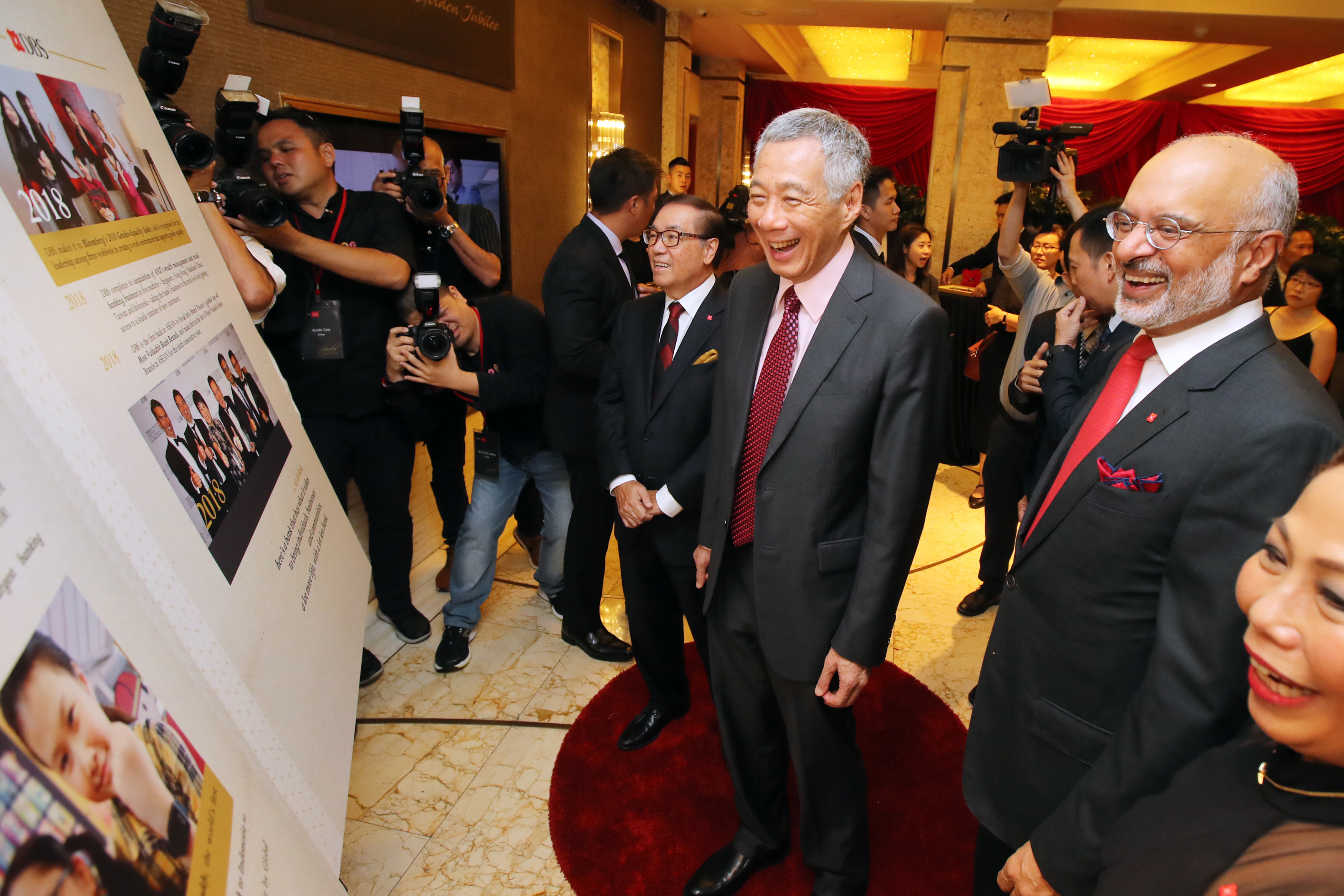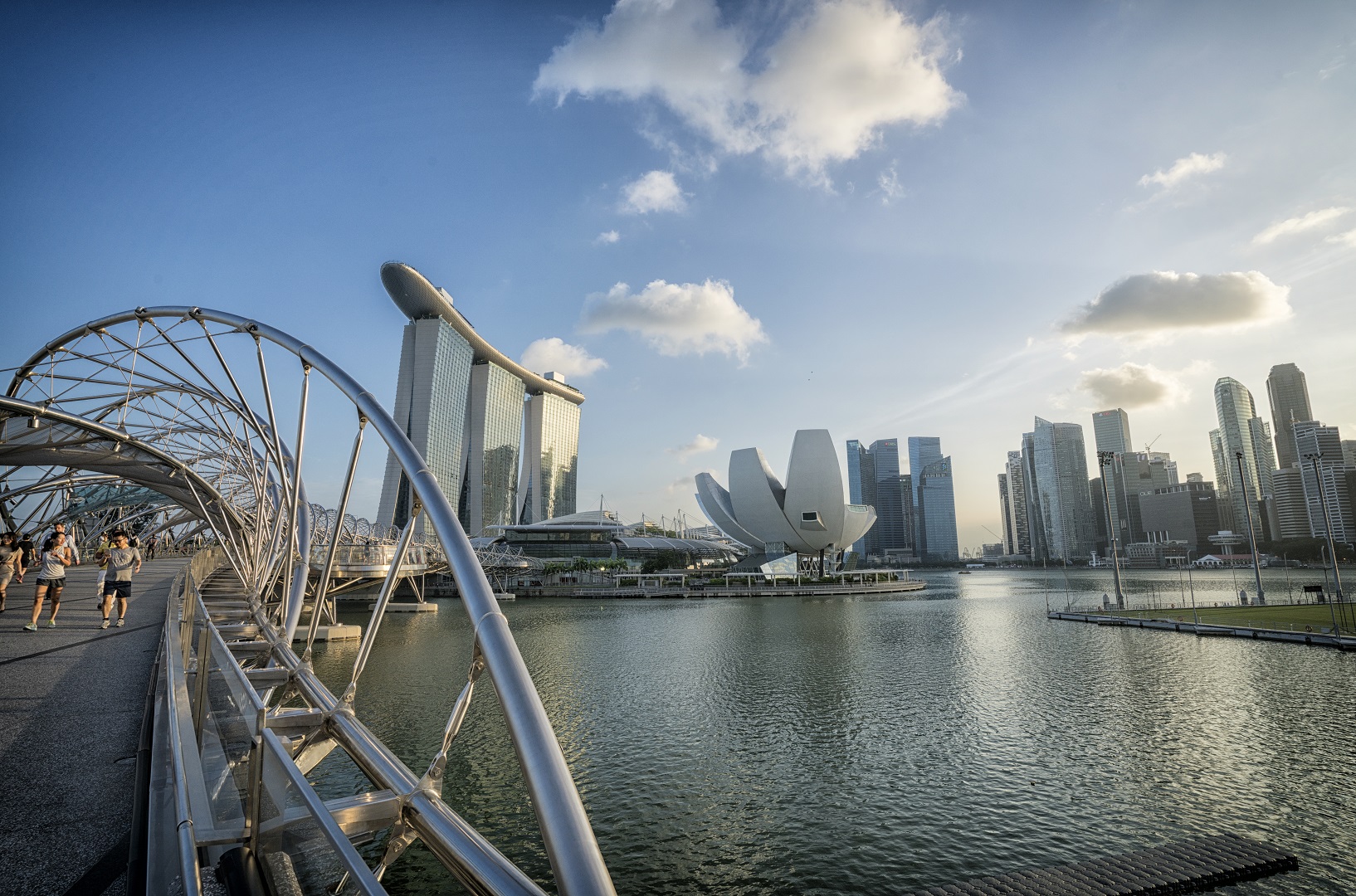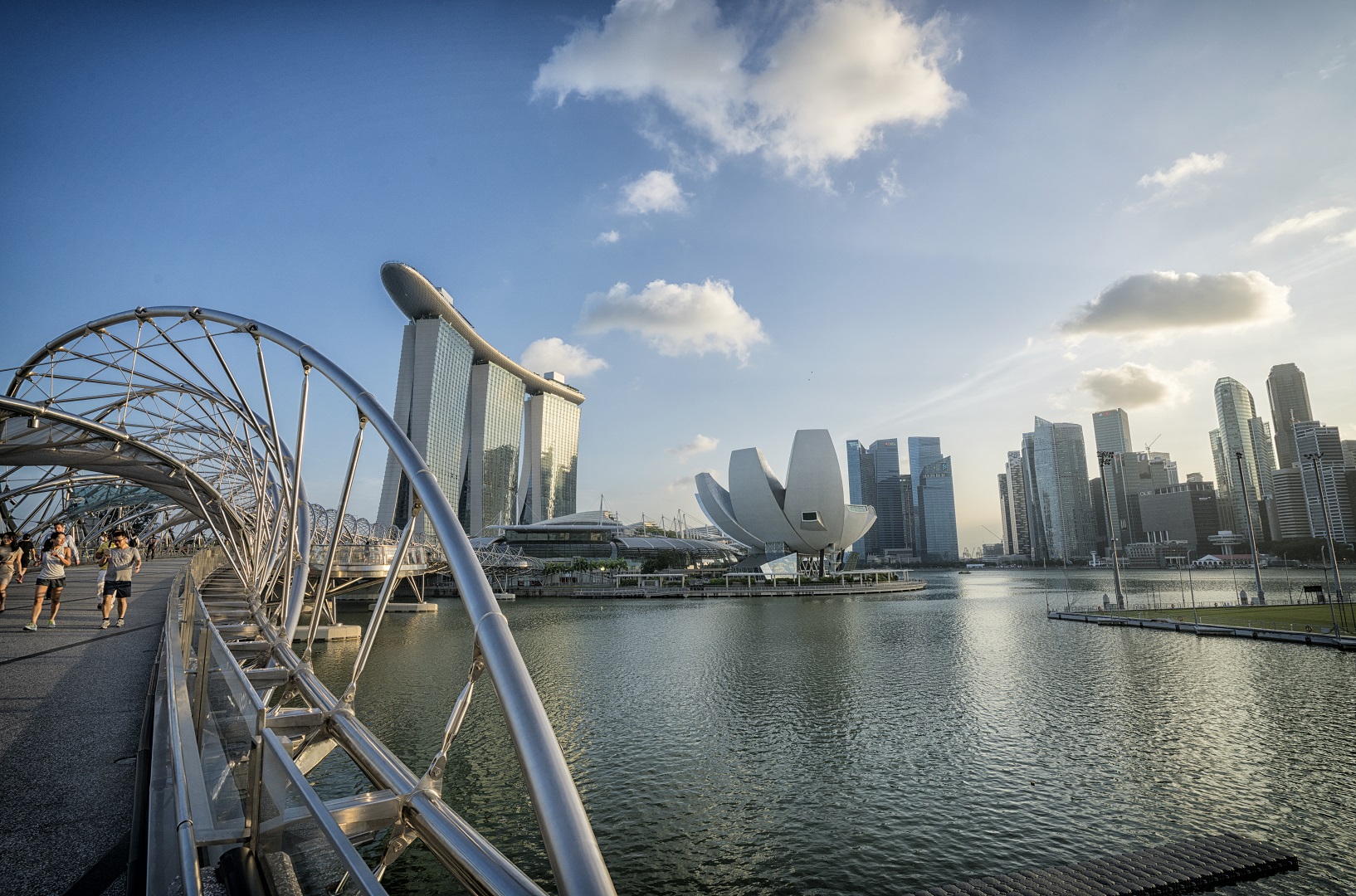DBS Bank is 50 years old.
As its Chairman, Peter Seah, stated during its golden jubilee celebrations, it has come a long way since its early beginnings within the Economic Development Board (EDB).
Seah elaborated, DBS had a crucial mission, which is "to finance the industrialisation of Singapore".
 DBS Chairman Peter Seah, PM Lee and DBS CEO Piyush Gupta taking a walk down DBS and the nation's history at DBS SPARKS The Musical.
DBS Chairman Peter Seah, PM Lee and DBS CEO Piyush Gupta taking a walk down DBS and the nation's history at DBS SPARKS The Musical.
Little wonder then that DBS has been instrumental in "shaping the physical landscape of Singapore" and fuelling "the nation's development as a global financial centre."
Originally an offshoot of EDB
The idea of creating a development bank in Singapore was first mentioned in the report of the United Nations (UN) Industrial Survey Mission to Singapore, headed by Dutch economist Albert Winsemius.
The report had proposed the establishment of an economic body to lead Singapore’s industrialisation programme.
Its responsibilities would include working to attract foreign investments into Singapore, providing industrial financing, and managing industrial estates.
These responsibilities of the economic body were to be then transferred to a development bank.
Accordingly, DBS had its genesis in the financial operations of the EDB.
Within the span of five years 1962 to 1967, EDB's total industrial financial commitments had risen nearly tenfold, from S$7.4 million S$73.9 million.
This resulted in the Government's decision to create a development bank to manage the needed expansion in the scale of operations for industrial financing operations.
Meanwhile, the EDB would focus solely on industrial promotion.
Thus DBS was born.
Notable contributions
Since then, DBS has made many contributions to building up the financial well-being of Singapore.
Constructing the DBS Building on Shenton Way
One of the first major development projects undertaken was the construction of DBS Building on Shenton Way, which began in August 1969.
[caption id="" align="alignnone" width="595"] Source: DBS Bank[/caption]Completed in 1974 at a cost of S$36.6 million, this office-and-shopping complex consisted of a podium block and three superstructures. The tallest structure -- a 50-storey tower block -- was to serve as the new headquarters of DBS.
Constructing Raffles City
Another major project was the construction of Raffles City.
First announced in 1969, the project took 17 years to complete and cost S$600 million, making it “the single largest commercial property development” in Singapore for its time.
[caption id="" align="alignnone" width="627"] Source: Visit Singapore[/caption]
Source: Visit Singapore[/caption]
Envisioned as a “city within a city”, the aim of Raffles city was twofold: to boost the vibrancy of the Central Business District (CBD) for after office hours, and to refocus the centre of development towards the waterfront.
As Seah recounts, it was a project that "was so mammoth, it felt like it would take a lifetime to plan and execute."
Seah added that the project would take 17 years from conception to completion.
Financing the reclamation of Marina Bay
There was also the reclamation of the Marina Bay area in the 1970s which was financed by DBS.
[caption id="" align="alignnone" width="534"] Source: URA Singapore[/caption]
Source: URA Singapore[/caption]
The aim of this project was to create a new site known as Marina Centre, which was to serve as a showpiece for the city.
It was to consist of commercial and residential developments, as well as a performing arts centre to liven up the place at night.
For Seah, it was a project where the work came "full circle", since "more than 40 years later, the Marina Bay area is a thriving financial centre."
Awarded twice by Euromoney
[related_story]
This is the reason why Euromoney, a highly established magazine which reports on global capital markets (think the Emmy equivalent of banking), awarded DBS twice, as the World's Best Digital Bank and World's Best Small-Medium-Enterprise (SME) Bank for this year.
For a bank of its size, it has played an outsized role in the development of Singapore.
Top Image from Urban Redevelopment Authority of Singapore
If you like what you read, follow us on Facebook, Instagram, Twitter and Telegram to get the latest updates.
